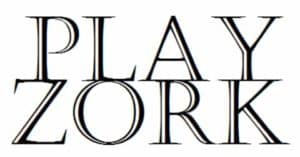In the late 1970s, a group of computer enthusiasts from the MIT Dynamic Modelling Group embarked on a pioneering journey to create a game that would go on to shape the landscape of computer gaming forever. Little did they know that their creation, Zork, would become a legend in the gaming industry, inspiring countless adventurers and setting the stage for a new genre of interactive storytelling.
The Origins of Zork
The origins of the Zork game can be traced back to the late 1970s, when Tim Anderson, Marc Blank, Bruce Daniels, and Dave Lebling, who were members of the MIT Dynamic Modelling Group, shared a passion for computer programming and gaming. They set out to create a game that would push the boundaries of what was possible with the technology of the time, and thus, Zork was born.
Zork was initially developed as a text-based adventure game, also known as a “interactive fiction.” The game was designed to be played on large mainframe computers, where players would interact with the game world by typing text commands and receiving text-based descriptions of the game’s environment, characters, and events.
The Development Process
The development process of Zork was a labor of love for the team at the MIT Dynamic Modelling Group. They worked tirelessly to create a game that would captivate players with its immersive storytelling, challenging puzzles, and dynamic world. The team used the MDL programming language, which was a variant of Lisp, to create the game’s engine and implement its intricate mechanics.
One of the key challenges the team faced was the limited processing power and memory of the mainframe computers at the time. They had to find creative solutions to work within these constraints, such as compressing the game data and optimizing the code to ensure smooth gameplay.
Another significant challenge was designing the game’s puzzles and interactive elements. The team aimed to create a game that would require players to think critically, solve puzzles, and make meaningful decisions to progress. They carefully crafted the game world, filled it with intriguing characters, hidden treasures, and challenging obstacles, and refined the gameplay through extensive playtesting.
The Birth of Zork
The term “Zork” originated as MIT hacker slang for an incomplete program. After completing the game, the creators briefly renamed it “Dungeon” but eventually reverted to the original name of Zork due to a trademark infringement notice from the publishers of Dungeons & Dragons.
After years of hard work and dedication, Zork was finally ready for the world. The team at the MIT Dynamic Modelling Group released the game under the name “Zork: The Great Underground Empire – Part I” in 1979 as a commercial product for the DEC PDP-10 mainframe computer.
Zork quickly gained popularity among computer enthusiasts, who were captivated by its immersive gameplay and rich storytelling. Despite being a text-based game, Zork offered a unique and engaging experience that kept players coming back for more. Its success led to the development of sequels, including “Zork II: The Wizard of Frobozz” and “Zork III: The Dungeon Master,” which expanded the game world and further refined the gameplay.
Zork’s Legacy
Zork’s impact on the gaming industry cannot be overstated. It is widely regarded as one of the pioneering games that popularized the text adventure genre and set the stage for the development of interactive storytelling in video games. Zork inspired countless other adventure games that followed, including classics like “The Hitchhiker’s Guide to the Galaxy” and “Planetfall,” and its influence can still be seen in modern adventure games today.
Zork also paved the way for the creation of Infocom, the game’s publisher, which went on to become one of the most successful and influential game development companies of its time. Infocom continued to produce and publish interactive fiction games, including a wide range of Zork spin-offs and
